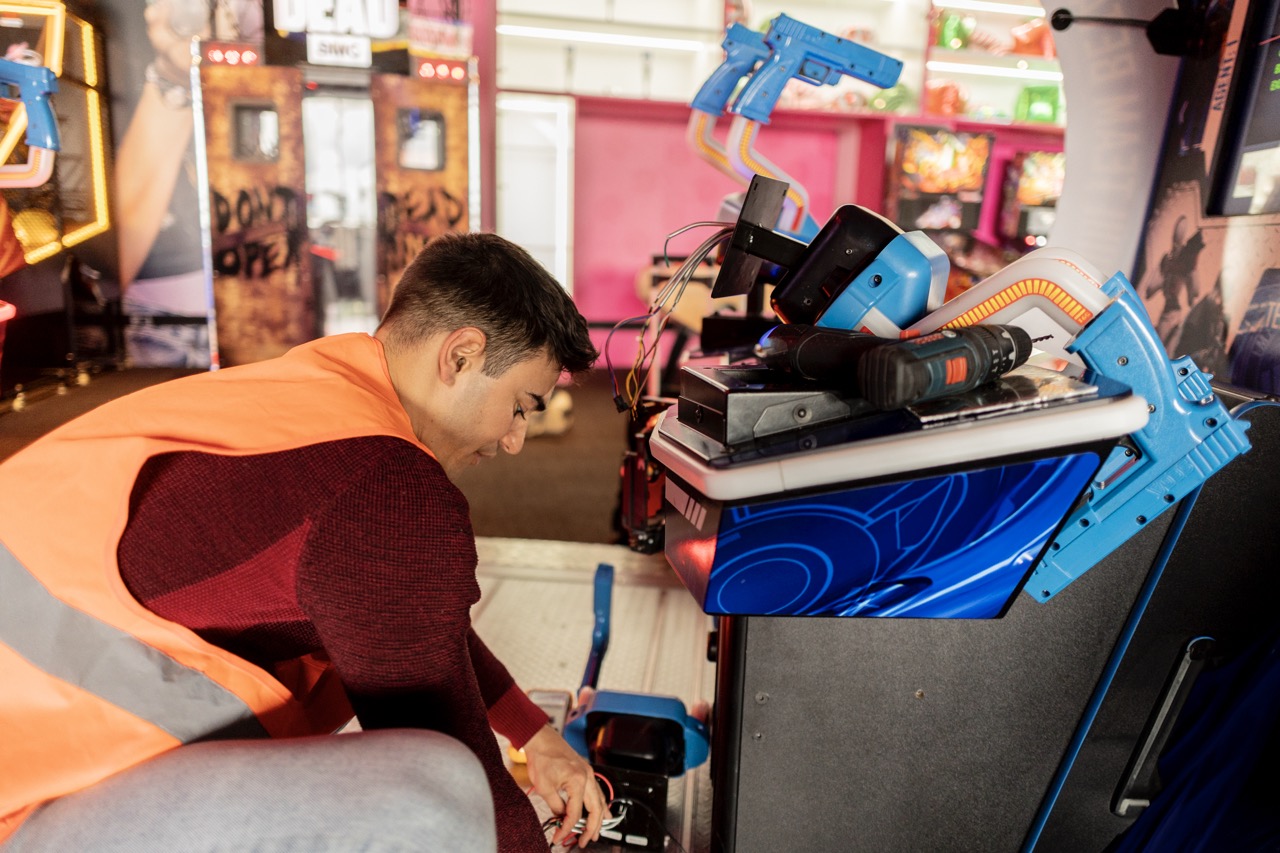The world of arcade gaming has seen countless titles that have captured the imagination of players everywhere, but few have made as significant an impact as "Thunder Blade." Released in the late 1980s, this helicopter action game not only brought a fresh perspective to arcade gaming but also helped shape an entire genre. Let’s take a closer look at how Thunder Blade rose to prominence, what sets it apart, and its enduring legacy in the gaming community.
The Rise of Thunder Blade: A Game-Changer in Arcades
When "Thunder Blade" hit the arcade scene in 1987, it was a breath of fresh air. Developed by Sega, this game emerged at a time when the arcade landscape was dominated by traditional shooters and platformers. With its innovative 3D graphics and immersive gameplay, Thunder Blade quickly attracted a crowd eager for something new. Players were enthralled by the idea of piloting a helicopter through various missions, blasting enemies and dodging obstacles in a visually appealing environment.
The game was revolutionary for its time, employing a unique combination of isometric and third-person perspectives that offered a sense of motion and depth previously unseen in arcade games. The ability to navigate through different terrains—from urban landscapes to jungle settings—provided players with a variety of experiences that kept them coming back for more. Thunder Blade didn’t just elevate the helicopter genre; it set new standards for arcade gaming as a whole.
As arcade cabinets became a staple in entertainment zones, Thunder Blade’s popularity soared. It was not uncommon to see lines of eager gamers waiting for their chance to take control of the chopper, a testament to its massive appeal. This influx of players also highlighted a shift in gaming culture, as players began seeking out more complex and engaging experiences, paving the way for future titles in the genre.
What Makes Thunder Blade Stand Out in the Helicopter Genre?
One of the standout features of Thunder Blade is its ability to blend arcade action with a touch of realism. Unlike many helicopter games that relied solely on top-down views, Thunder Blade offered a dynamic gameplay experience that allowed players to feel like they were genuinely piloting a helicopter. The combination of 3D graphics and a rotating cockpit perspective gave users a unique sense of control and immersion.
Another key element that made Thunder Blade shine was its variety of missions. Players weren’t just flying around aimlessly; they were tasked with objectives that required strategy and skill, such as rescuing hostages or destroying enemy installations. This added layer of complexity elevated the gameplay beyond simple shooting, engaging players more deeply and allowing for a richer gaming experience.
Moreover, the memorable sound design and exhilarating soundtrack contributed to the game’s appeal. The audio elements enhanced the sense of urgency and excitement, pulling players into the action. Together, these features helped Thunder Blade carve out a niche in the crowded arcade landscape, making it a standout title that left a lasting impression on gamers and developers alike.
Gameplay Mechanics: How Thunder Blade Flies Above the Rest
At its core, Thunder Blade employs intuitive controls that make it accessible to players of all skill levels while still offering challenges for seasoned gamers. The joystick and buttons allowed for seamless navigation and rapid response, crucial for dodging enemy fire and obstacles. This user-friendly control scheme was significant in attracting a diverse player base, from casual gamers to hardcore enthusiasts.
The game also introduced a diverse range of enemy types that kept players on their toes. Each level features different adversaries, from ground troops to airborne threats, requiring players to adapt their strategies on the fly. The dynamic nature of combat, combined with power-ups and bonuses, made every playthrough feel unique and engaging. This variability ensured that players would want to return for another round, eager to improve their skills and beat their previous scores.
Additionally, the level design was nothing short of remarkable for its time. With distinct environments and increasingly difficult challenges, Thunder Blade kept players constantly engaged. The ability to switch between different views while navigating obstacles added another layer of complexity, allowing for a more exhilarating experience that set it apart from many other helicopter arcade games.
Nostalgia and Legacy: Thunder Blade’s Impact Today
For many who grew up in the ’80s and ’90s, Thunder Blade holds a special place in their hearts. The game was a defining moment in arcade history, representing not just a shift in helicopter games but also a broader evolution in gaming technology and design. Its innovative approach inspired many future titles in the genre, laying the groundwork for games that feature aerial combat and 3D graphics.
Today, Thunder Blade is often remembered fondly by retro gamers and is frequently cited in discussions about classic arcade titles. Its influence can be seen in modern helicopter games, which continue to draw inspiration from its mechanics and design elements. Many game developers still look back at Thunder Blade as a benchmark for how to create a compelling and immersive gaming experience.
Moreover, the resurgence of retro gaming and arcade culture in recent years has introduced Thunder Blade to a new generation of gamers. With emulators and arcade collections, young players can experience the thrill of this classic title. This revival not only keeps the spirit of Thunder Blade alive but also reinforces its status as a pioneering game in the arcade helicopter genre.
In summary, "Thunder Blade" stands as a testament to the creativity and innovation that defined the late ’80s arcade scene. Its rise heralded a new era for helicopter games, combining engaging gameplay mechanics with unforgettable graphics and sound. As nostalgia continues to fuel interest in retro gaming, Thunder Blade remains a beloved classic that paved the way for future generations of gamers. Whether you’re a seasoned player or new to the arcade scene, Thunder Blade’s legacy is one that continues to inspire and entertain.










